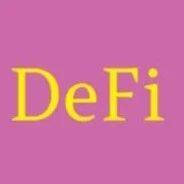Since the beginning of internet consumption, investors and builders have regarded Product Market Fit (PMF) as a metric for evaluating any startup company. Before finding PMF, a startup is not actually a company. Instead, it is a founding team that is testing hypotheses and proving the correctness of this set of hypotheses.
Before finding PMF, founders are laboratory scientists, preparing, testing, and evaluating new reagents. After finding PMF, these scientists, wearing the mask of online retailers, graduate from the laboratory and become immortal real entrepreneurs. They thus enter the pearl-studded founder’s door of Silicon Valley, gaining all the glory.
However, PMF is not a one-time victory but an ongoing battle. Once you win the first battle of PMF, competition will come, and you will be tested in battle every day. Your competitors dream of driving you off the throne of PMF and finding victory at your expense – or so we fought in web2.
In 2021, the term “Web3” became a part of internet vernacular. The spirit of decentralization and the focus on community attitudes indicate that finding PMF through actual products is only a small part of the early journey of founders. We are introduced to new growth levers, including tokens, airdrops, and DAOs, with composability and ownership at the core.
As an investor and builder, I have to ask myself the actual meaning of PMF in cryptocurrency and consider whether the term itself is outdated and needs a new definition for cryptocurrency products.
I have bet my career and our entire venture capital fund on the mainstream adoption of cryptocurrency. But I often question whether the space really needs mainstream adoption to achieve its mission and for founders and investors to succeed. My belief is that we completely need a new measure of success: Crypto Market Fit (CMF).
Crypto Market Fit (CMF) is PMF for Web3-native products, judged by Web3 metrics and mechanisms rather than the old standards of Web2.
The structure of language determines the speaker’s perception and categorization of experience. Because Web3 is a new experience, we sometimes need to create a few terms here and there.
In the context of Tinder’s Web2 product, my PMF framework is attached to very specific metrics focused on consumer software. At Tinder, our dashboard was specially designed for us to view users as representatives of DAU/WAU/MAU. We consider our “top channels” with the method of D1/D7/D30.
If our business metrics drop overnight, Tinder’s alarm will ring (or at least our pagers will start to vibrate wildly). We will scramble to sit with engineers in a cramped conference room for debugging, just like firefighters in real life putting out a raging fire in the summer. We are trained to look at charts like the one below and learn to compare our own metrics.
Take a quick look at the chart above, and you will find that most Web2 social products that visit PMF have a WAU/MAU ratio of over 70%. But Uniswap is not a consumer social app like Tinder. Many of the best examples of PMF in Web3 are highly financial use cases, and their engagement patterns are completely different from swiping right on Tinder or scrolling through Instagram.
Uniswap will never have Tinder’s DAU, nor should it expect to.
Crypto protocols are not social networks. But industry experts are still very critical of the size of the user group within cryptocurrencies.
In fact, a new group of influential people has built a large following by questioning whether cryptocurrencies have any legitimate use cases, mainly because they see smaller DAU/WAU/MAU data and think that no value or utility is being created. Look at Uniswap’s financial situation, and you will find that this is not the case.
So, let’s leave my old company Tinder and take a look at the KPM of Web2 financial consumer applications that undoubtedly show PMF: Coinbase and Robinhood. We will compare them with Uniswap, a huge DEX that has definitely achieved PMF (and perhaps CMF).
It is impossible to truly standardize this process because the company chooses which statistics to disclose in public documents. Alas, give it a try.
Let’s compare Coinbase:
Let’s take a look at Coinbase’s MTU (monthly trading users) and trading volume from the second quarter of 2022 to Uniswap V3 data through msilb7’s Dune dashboard.
With only 2.3% of Coinbase’s monthly trading users, Uniswap has completed 79% of the trading volume. Shocking, right? This is a pattern you will start to notice.
Web3-native financial applications like DEX only need a small fraction of users to achieve tremendous economic success compared to Web2-native trading platforms or even CEX. Uniswap doesn’t need to advertise in the Super Bowl to attract millions of users because the whales are already using them.
Perhaps, we should not try to reach for the moon but be content with the stars













